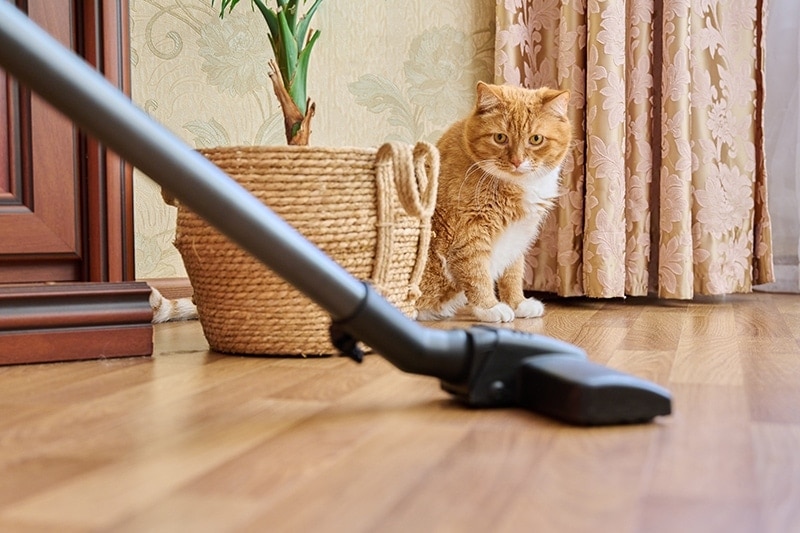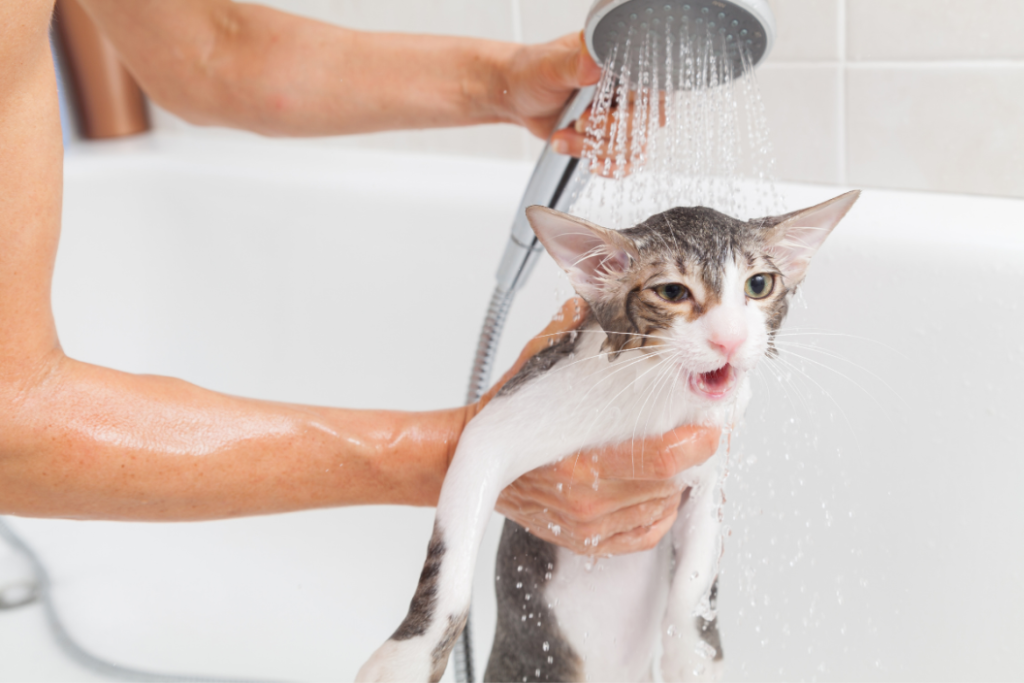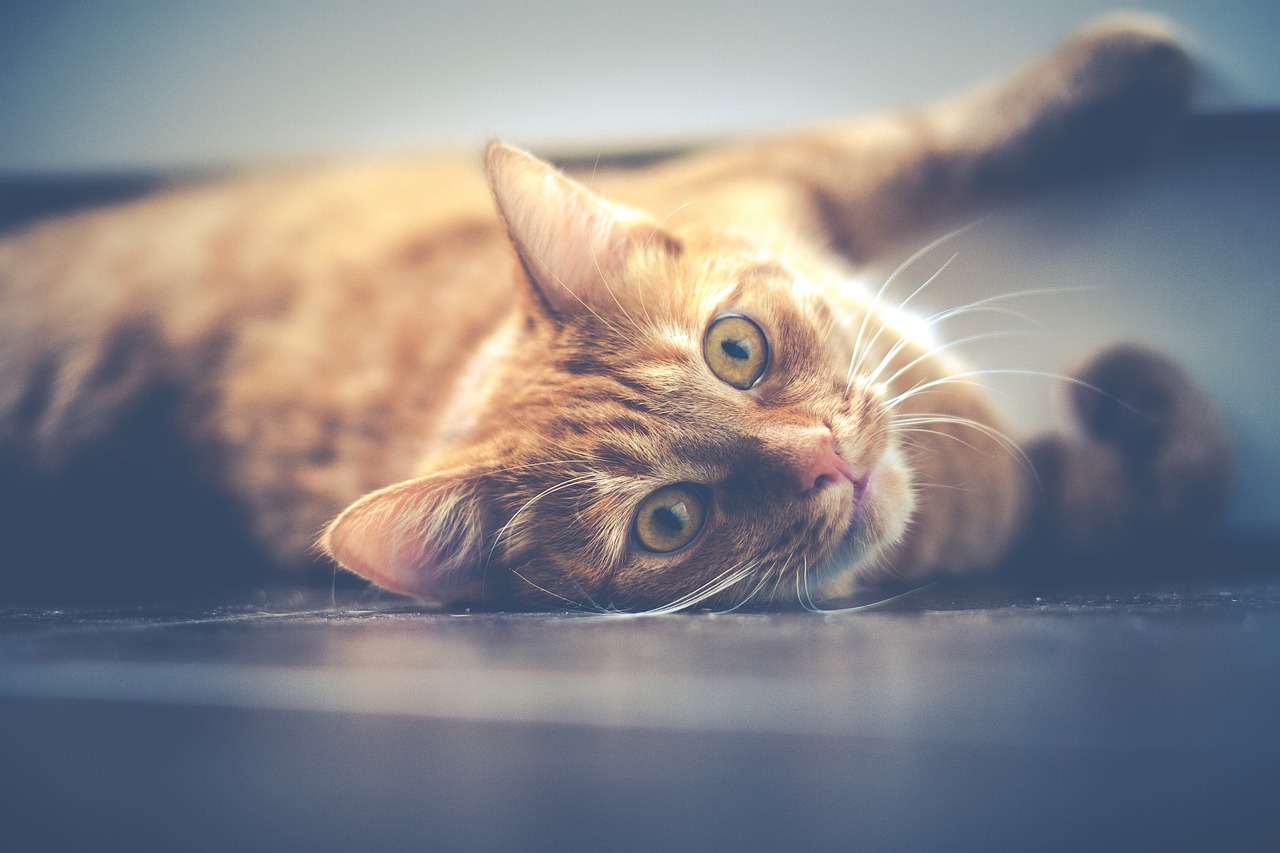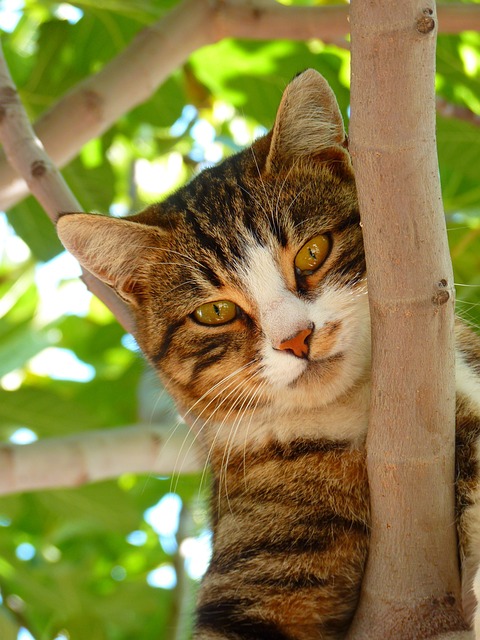Cats are often seen as independent, fearless animals, gracefully exploring their surroundings without hesitation. Yet behind their confident exterior, many cats experience fears and anxieties that affect their behavior, health, and overall happiness. Understanding what cats are afraid of is essential for providing a safe, calm, and loving environment. In this article, we explore 10 common fears in cats, why they happen, and practical ways to help your feline companion feel secure.
1. Loud Noises
Cats have exceptionally sensitive hearing, much more acute than humans. Loud sounds like thunderstorms, fireworks, vacuum cleaners, or construction noises can startle them instantly. Even if your cat doesn’t visibly react, they may experience hidden stress that affects their health over time. Some cats may freeze in place, while others hide under furniture or bolt to another room.
How to help: Create a quiet retreat with soft bedding, cover windows during storms, and use white noise or calming music to mask harsh sounds. Gradually exposing cats to low-volume recordings of noises they fear, paired with treats, can help them feel more confident over time.

2. Cats Afraid of Strangers and Unfamiliar People
Many cats are cautious around people they don’t know. Sudden visits from friends, family, or delivery personnel can make them retreat, hiss, or hide. This fear is often stronger in cats that weren’t properly socialized as kittens or have had negative past experiences.
How to help: Allow your cat to approach strangers on their own terms. Offering treats or toys during introductions can create positive associations. Avoid forcing interaction, as this can increase stress and lead to defensive behaviors.
3. Other Animals

Whether it’s another cat, a dog, or a neighborhood wildlife visitor, many cats are naturally wary of other animals. Territorial instincts and prior conflicts can trigger fear or aggressive behavior. Even well-socialized cats may prefer observing from a distance rather than engaging.
How to help: Introduce new pets slowly, using scent swapping and gradual, supervised meetings. Ensure each cat has its own space for feeding, resting, and elimination. Pheromone diffusers can help calm stressed cats during introductions.
4. Sudden Movements
Cats are alert hunters and cautious prey. Sudden movements—like someone reaching quickly toward them, children running, or objects falling—can trigger a flight response. Even playful gestures can be misinterpreted as threats.
How to help: Approach your cat slowly, avoid abrupt gestures, and use toys rather than hands for interactive play. Providing vertical spaces like shelves or cat trees gives them a safe vantage point where they can retreat if startled.
5. Changes in Environment
Cats thrive on routine and familiarity. Moving to a new home, rearranging furniture, or introducing unfamiliar objects can provoke anxiety. Their reliance on scent and routine helps them feel secure, so sudden changes may result in hiding, over-grooming, or reduced appetite.
How to help: Introduce changes gradually, keeping key items like food, water, litter boxes, and bedding consistent. Maintaining regular feeding and play routines reassures your cat that their environment is predictable and safe.
6. Being Alone is a Common fears in cats
Separation anxiety is common in cats, particularly those closely bonded to their humans. Signs include excessive meowing, destructive behavior, or elimination outside the litter box. Unlike dogs, cats may hide their distress, making it harder to detect.
How to help: Provide interactive toys, puzzle feeders, or window perches to keep them engaged while you’re away. Leaving an item with your scent, such as clothing, can provide comfort. Gradually increasing the time your cat spends alone can help build independence and confidence.
7. Car Travel Anxiety in Cats
Travel can be stressful for cats due to motion, confined spaces, and unfamiliar scents. Even short trips to the vet can trigger anxiety, leading to vocalization, drooling, or attempts to escape. Travel aversion is often reinforced by negative past experiences.
How to help: Make carriers cozy with familiar blankets and toys, and use pheromone sprays to reduce stress. Take short, positive trips to accustom your cat to the motion of the car before longer journeys.
8. Cats Afraid of Water

Contrary to the common belief that all cats hate water, most are naturally averse to it. Wet fur can feel heavy, cold, or uncomfortable, triggering anxiety. This instinct may also stem from evolutionary survival, as wet cats are more vulnerable.
How to help: Avoid bathing unless necessary. If bathing is unavoidable, use lukewarm water, gentle handling, and rewarding treats. Many cats prefer spot cleaning with damp cloths rather than full immersion.
9. Cats Afraid of Veterinary Visits
Vet visits rank high on the stress scale for cats. Unfamiliar smells, handling, and restraint can cause intense fear. Stress can manifest as defensive behaviors, refusal to eat, or withdrawal, making routine check-ups challenging.
How to help: Use familiar blankets or toys in carriers, schedule appointments during quieter times, and consider pheromone sprays. Gradual desensitization to carriers and pre-visit play can also make the experience less frightening.
10. Cats Afraid of the Unknown
Cats are naturally cautious and curious yet wary. Anything unfamiliar—a new object, sound, or environment—can trigger fear. This heightened alertness helps them survive in the wild, but in domestic settings, it may lead to chronic stress if not managed.
How to help: Introduce new experiences gradually and provide escape options like vertical spaces or hiding spots. Reward curiosity and exploration with positive reinforcement, treats, and affection.
How to Recognize Fear in Cat
Recognizing when a cat is afraid or anxious is essential for addressing their stress before it escalates. Cats often communicate their discomfort through both behavioral and physical cues.
- Hiding or withdrawing: An anxious cat may retreat to quiet, enclosed spaces, such as under beds, inside closets, or behind furniture. This behavior is a natural instinct for safety, as hiding helps them feel protected from perceived threats.
- Hissing, growling, or swatting: Defensive behaviors like hissing, growling, or swatting indicate that a cat feels threatened and is trying to establish boundaries. These warning signs should never be ignored, as they show your cat is under stress.
- Flattened ears or dilated pupils: Physical signals such as ears pressed flat against the head or wide, dilated pupils reveal heightened alertness or fear. These subtle cues often accompany tension in the body and stiff posture.
- Overgrooming or neglecting grooming: Anxiety can affect self-care routines. Some cats respond to stress by excessively licking or grooming themselves, sometimes causing bald spots or skin irritation. Others may neglect grooming entirely, leading to matted fur or a greasy coat.
- Changes in appetite or elimination habits: Stress can interfere with eating patterns, causing a cat to lose interest in food or overeat. Similarly, fearful cats may avoid their litter boxes, urinate or defecate outside designated areas, or develop gastrointestinal issues.
By paying attention to these signs, cat owners can detect fear early, intervene appropriately, and help their feline companions feel safe and secure.
Conclusion
Cats, despite their independent image, experience a wide range of fears and anxieties. From loud noises and strangers to changes in routine or travel stress, understanding your cat’s triggers is essential. By creating a stable environment, offering comfort, and gradually exposing them to new experiences, you can help your cat feel safe, confident, and happy in their home.






